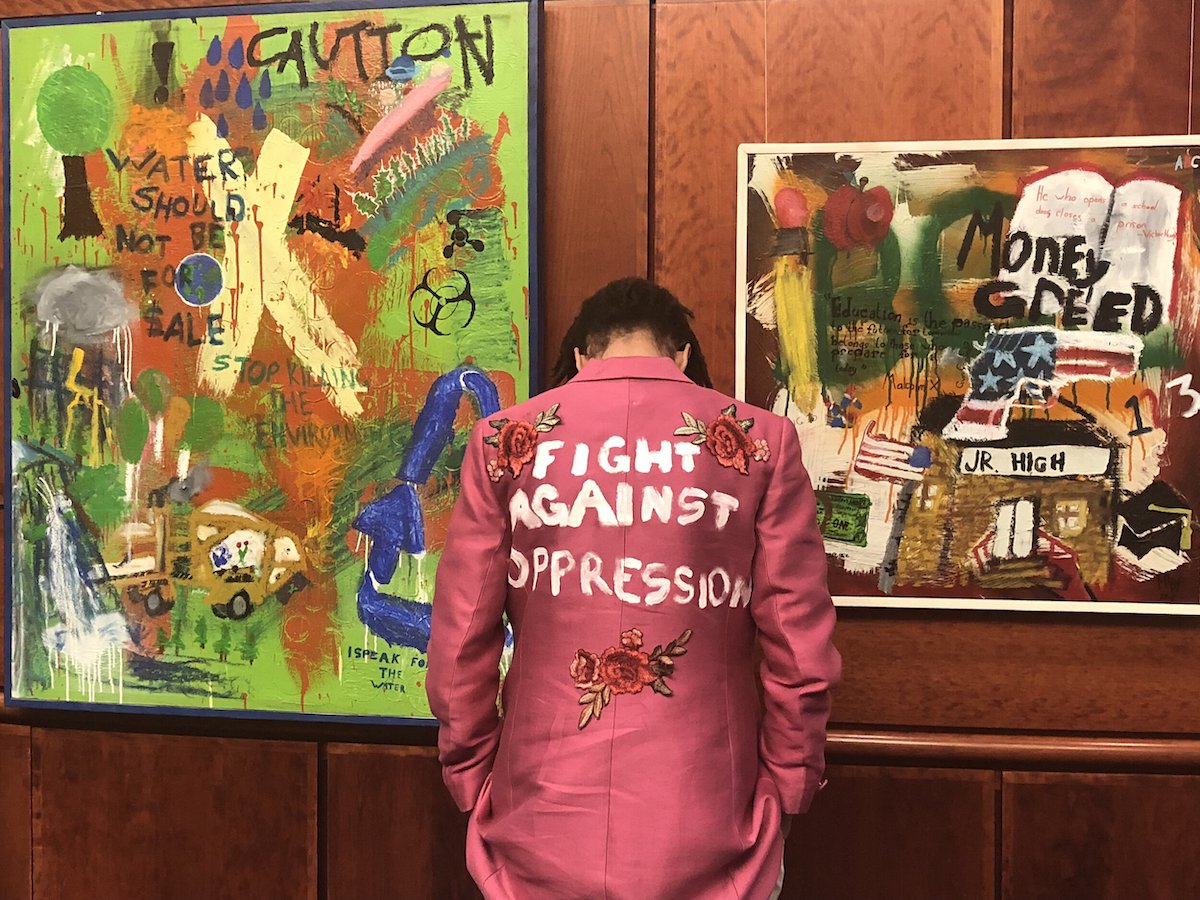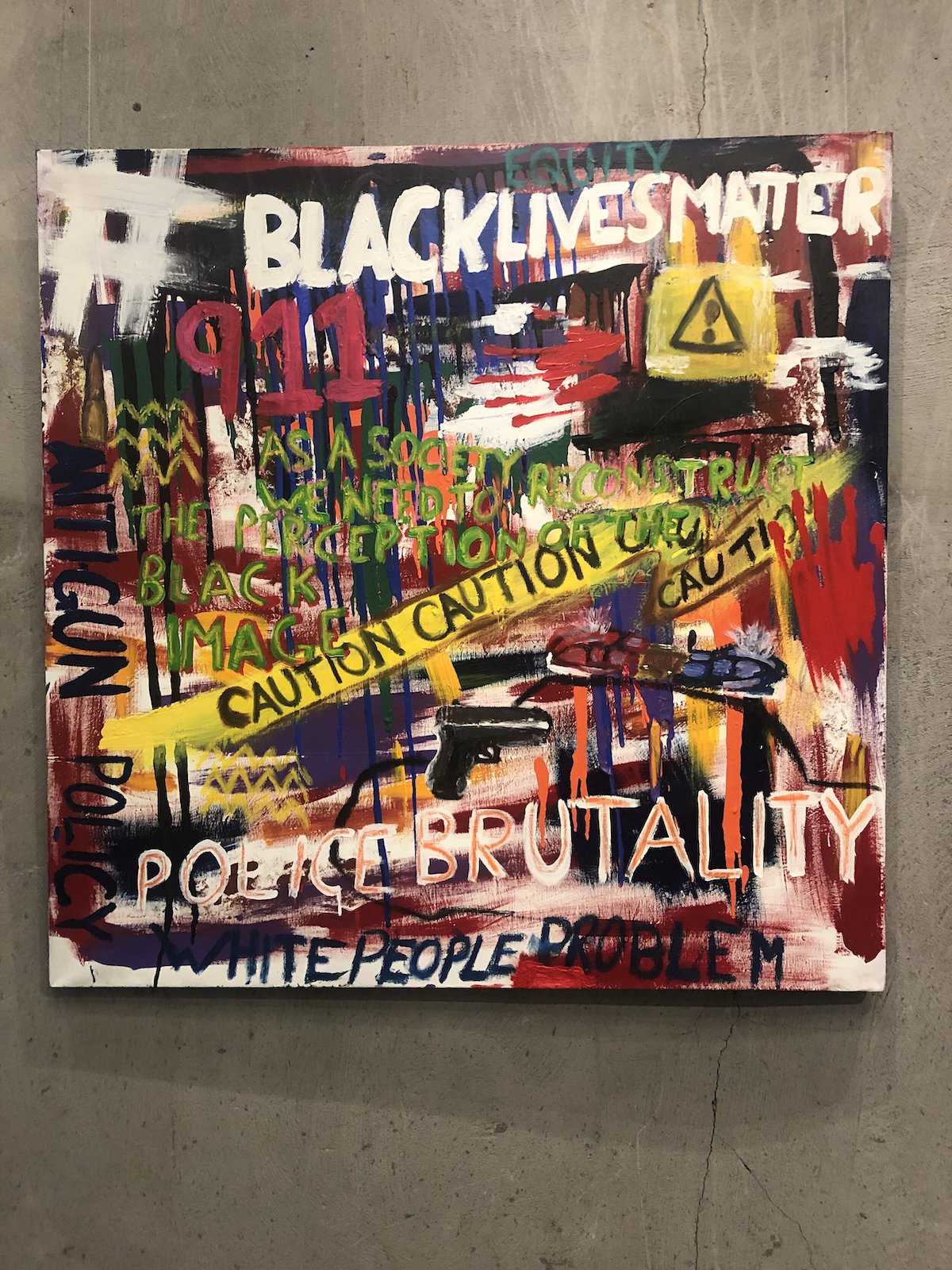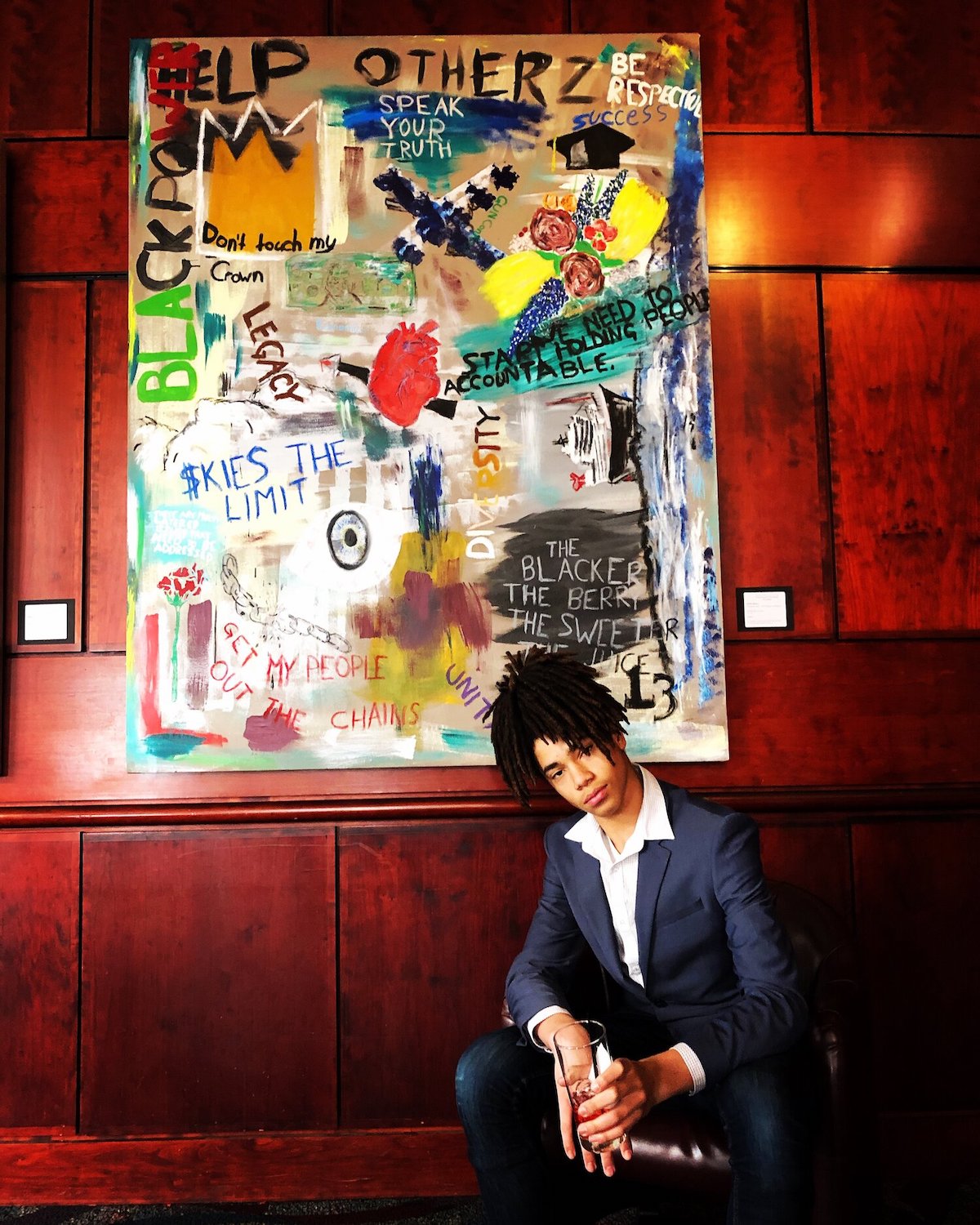Throughout the years, art educators have worked with many impressive and inspiring students. We can all think of a few who exceeded our expectations. Some students created work that was far beyond that of their peers. Other students impressed us with their thoughtful responses and how they care for others. Every once in awhile, though, a student comes along who fills us with hope for the future. We encourage their talents and root for them long after they leave our classrooms.
While these young artists inspire educators like us, their work and actions largely go unnoticed by their peers. They may achieve recognition as they get older, but what if we could showcase their talent sooner? Students would surely be impacted by seeing someone their age pushing the limits of what young artists can do. Providing your students with a positive young role model could be truly motivating and inspiring.
Prepare to be Inspired by 13-Year Old Artist, Hobbs.
One such role model you should consider sharing with your students is 13-year old intellect, Hobbs. Hobbs is an artist and ballet dancer in the Portland, Oregon metropolitan area. He established his urban lifestyle line, called City Troll, LLC, in 2016. He creates shirts and tote bags with hand screen-printed quotes, phrases, and original drawings. His mixed-media abstract paintings have been included in noteworthy exhibitions at the Portland’5 Arts and Performing Center, Portland Center Stage at The Armory, Basic Space Gallery, and Ori Gallery.

Hobbs is clearly an ambitious young artist with a variety of talents. He would be a terrific example to share with your students. They can explore his website and see another young person creating, expressing themselves, and sharing it with the world. Teens can sometimes feel limited in the heights they can reach because of their age or seeming lack of resources. Hobbs serves as an example of how one teen dares to “dream, practice, and expand.”
Projects and Activities Inspired by Hobbs
There are a number of ways this artist can inspire your students. You could simply show his work and open a discussion about what students find interesting, what they like most, and how they interpret his artwork. This may already be a conversation you’ve modeled in the classroom using other artists. Students can communicate their thoughts and opinions about Hobbs in the same manner they would talk about Keith Haring, Jean-Michel Basquiat, Frida Kahlo, Andy Warhol, etc.
In addition to classroom discussion and critique, you could follow up students’ introduction to Hobbs with a number of projects and activities:
Create a Lifestyle Line
Hobbs founded City Troll, LLC, at the age of nine, in May of 2016. The shirts feature original drawings of animals: an elephant, a flamingo, and a ram. Other shirts feature phrases like, “Black Artists Matter,” “Black Boy Joy,” and “Your Privilege is Showing.” Hobbs has a clear point of view and a series of designs that share a common theme. His goal is to raise enough money to financially elevate his dance pursuits. He dreams to one day become a professional dancer and have his art in the permanent collection of a world-renowned institution.
More Lessons. More Resources. Standards-Aligned. Learn about FLEX Curriculum.
Ask your students to create their own lifestyle line. They don’t need to create an operational business, but you can get them to think like a working artist. Ask them to consider what their line would be called. Students could decide on a theme of symbols or imagery they would design. Hobbs had multiple animal designs. Your students may choose a different theme that interests them. The same could be applied for phrases and quotes. Students could choose text that represents issues or topics of interest to them.
Students could sketch their designs out and even create a mock-up online storefront to show how the design might look on different articles of clothing. Advanced students could choose a design to screen print and produce. To create a lifestyle line, students have to develop a clear point of view as, Hobbs has done. They will need to define their own style, message, color scheme, iconography, etc. Once they have a concept and a design, they will need to consider how it would be presented for sale. Essentially you are showing your students how to think like a contemporary artist. Hobbs is a great example of a teenage artist who does this well!
Create Art with a Social Message
Many of Hobbs’s beautiful abstract paintings share a deeper message. With titles like EARTH/ MAINSTREAM CONSUMERISM IS MASSACRING THE ECOSYSTEM and POLICE BRUTALITY/VIOLENT FATALITIES ARE ADVERSELY IMPACTING MARGINALIZED COMMUNITIES, it’s clear Hobbs is creating art in response to the world around him. Teenagers have a point of view on the social and political issues affecting their world. As art educators, we don’t need to tell them what to think, but give them the tools and encouragement to express themselves creatively.
Students can start by interpreting Hobbs’s artwork and decipher the issues that are important to him. By doing so, they gain some understanding of his perspective as an artist. Artists don’t simply create work that is aesthetically pleasing. They create art from personal experience, and/or commentate on what’s happening in their particular place and time in the world. Everyone has a point of view. We can empower our students to share their own unique ideas through art.
Have students brainstorm social issues as a class. This may seem like a daunting task, but define a social issue as “an issue that affects a community.” Be sure to define the community as “any group of people.” Your classroom is a community. Your school is a larger community. The city you live in is an even larger community, and so on and so forth. This will help your students wrap their heads around issues for their art projects. The issue could be against texting and driving, bullying, animal abuse, environmental concerns, etc. Most of your students have probably had to write an argumentative essay before in school. You can remind them of that experience as they choose an issue for their art project.
Once students have selected an issue, have them think about words, phrases, symbols, or images relating to the issue. While they can certainly include text as part of their artwork, encourage them to think of visual imagery to get their point across. You can point out other artists throughout history who have used art as a means to express important social or political issues: Pablo Picasso’s Guernica, Jacob Lawrence’s The Migration series, and/or Fransico Goya’s The Third of May, would be great historical references to share with students. Remember to supply them with the tools and support to express their own opinions, and not to impose your own.
Design a Personal Website
Hobbs has developed a website that communicates who he is as an artist and person. He showcases his love for dance in photos. He presents and sells his artwork in an online shop. He outlines his goals for the future. His Hobbs the Artist website is a true reflection of himself. Your students can use his website as an example of how to showcase their own goals, talents, and artwork.
Students can design a personal website on paper, or if technology and access allow, they could create one digitally! There are several free hosting sites available. Talk to your school or district technology department for recommendations. Whether they create their website as a concept sketch or a functioning page on the Internet, students can outline a few key components: an artist biography, an artist statement, and images of artwork. This could be an opportunity for you to help your students get in the habit of documenting their work and building a portfolio.
Balance Creative Passions
Hobbs is not only a visual artist, but he also plays music! He plays the trumpet and considers himself a recreational musician. He plays at the Ethos Music Community Center in Portland. Somehow, between starting his urban lifestyle line, and creating mixed-media paintings, Hobbs still has the time and passion to play music.
In addition to music, Hobbs is an accomplished ballet dancer. He primarily performs the Balanchine technique, contemporary, Horton modern technique, Jazz, and character. Hobbs described the dance as “his favorite way to express his creativity.” Hobbs is a great example of someone who is well-rounded in the arts.
You may notice some of your most creative students are often talented in more than one of the creative arts. For some, this can feel like being pulled in several different directions. While having many talents may seem like a gift, it can also be a curse. Often students are told to choose one of the arts when scheduling their classes for the school year. Those who try to maintain multiple passions start to feel overwhelmed. Hobbs is an example of one young artist who has found a way to balance his many creative interests.
Final Thoughts
Hobbs is a one-of-a-kind artist. He has forged a path and he can be a role model for students looking to find their own. As their teacher, you can point to Hobbs as a young person who shares his many talents with the world. He expresses himself and thinks beyond only what affects him personally. He creates art that communicates his thoughts and opinions about different social and political issues. He is an excellent role model for your students and has the potential to inspire them to also “dream, practice, and expand.”
How do you teach or encourage students to think like an artist?
How do your students approach social issues in the art room?
How have you supported your students as art entrepreneurs?
Magazine articles and podcasts are opinions of professional education contributors and do not necessarily represent the position of the Art of Education University (AOEU) or its academic offerings. Contributors use terms in the way they are most often talked about in the scope of their educational experiences.








